Exploring phytochemical, antioxidant, and antimicrobial properties of Plumeria pudica Jacq. leaves
- PMID: 39747423
- PMCID: PMC11696721
- DOI: 10.1038/s41598-024-83980-6
Exploring phytochemical, antioxidant, and antimicrobial properties of Plumeria pudica Jacq. leaves
Abstract
Since the emergence of the coronavirus disease, there has been a notable surge in demand for herbal remedies with minimal or no adverse effects. Notably, existing vaccines and medications employed in its treatment have exhibited significant side effects, some of which have proven fatal. Consequently, there is an increasing focus on pharmacological research aimed at identifying optimal solutions to this challenge. This shift entails exploring organic alternatives to traditional medicines, involving the extraction of superior phytochemicals from plants for enhanced biomedical applications in treating various diseases and conditions. To evaluate the qualitative phytochemicals and the quantity of these phytochemicals present in the leaf extracts of the medicinally important plant Plumeria pudica Jacq. Also, the antioxidant property estimation and the study of the antimicrobial properties of the plant have been done in this research. The qualitative phytochemical analysis was done to evaluate the presence of various phytochemicals and to quantify these phytochemicals total content estimation of them was done. Also, phytochemical analysis was further enriched by LCMS-QTOF analysis for the presence of compounds. The determination of the antioxidant potential of the leaves was done by two assays, the reducing power assay and the DPPH(2,2-diphenyl-1-picrylhydrazyl) assay. With that the antimicrobial properties of the leaves were also put to test against four bacterial strains namely, Kocuria rhizophila, Pseudomonas aeruginosa, Klebsiella pneumonia, and E. coli. The results of the phytochemical evaluation indicated that both IPA and hydroalcoholic extracts exhibited a superior phytochemical composition, emphasizing the higher extractive potential of IPA compared to the non-polar petroleum ether extract. The quantitative analysis revealed the predominance of IPA extract as the quantity of phenols (101 mg GAE/g dry-weight of plant extract), flavonoids (402.2 mg QE/g dry-weight of plant extract), carbohydrates (336 mg GLU/g dry-weight of plant extract), and proteins (164 mg BSAE/g dry-weight of plant extract) were highest in the IPA extract. LC-MS QTOF analysis demonstrated the presence of significant phytocompounds in all leaf extracts that have pharmacological applications. Moreover, in antioxidant assays, the IPA extract showed the highest DPPH scavenging activity (66.85% of inhibition), with an IC50 value of 33.54 µg/mL, and the IPA extract exhibited the highest reducing power (1.5 absorbance), signifying robust antioxidant activity. Furthermore, the antimicrobial evaluation revealed that the aqueous and hydroalcoholic extracts displayed larger zones of inhibition compared to the other leaf extracts. And, during the antimicrobial activity interestingly most susceptibility was shown by Klebsiella pneumonia. This study concludes that the diverse extracts of P. pudica leaves possess remarkable phytoconstituent properties both qualitatively and quantitatively, suggesting their rich bioactive compound content and potential as novel sources for therapeutic applications.
Keywords: Plumeria pudica; And antimicrobial potential; Antioxidant potential; Medicinal plants; Phenolics; Phytochemicals.
© 2024. The Author(s).
Conflict of interest statement
Declarations. Competing interests: The authors declare no competing interests. Ethical approval: All field studies and experimental research presented in this article, including the collection of plant material and laboratory tests, adhere to ethical standards. These activities comply with the guidelines, legislation, and standards set by the national and international regulations.
Figures

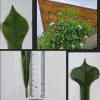









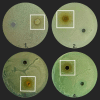
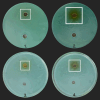
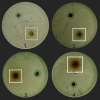
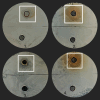


Similar articles
-
Phytochemical screening, UPLC analysis, evaluation of synergistic antioxidant and antibacterial efficacy of three medicinal plants used in Kinshasa, D.R. Congo.Sci Rep. 2025 Mar 24;15(1):10083. doi: 10.1038/s41598-025-94301-w. Sci Rep. 2025. PMID: 40128309 Free PMC article.
-
Biofilm inhibition mechanism from extract of Hymenocallis littoralis leaves.J Ethnopharmacol. 2018 Aug 10;222:121-132. doi: 10.1016/j.jep.2018.04.031. Epub 2018 Apr 24. J Ethnopharmacol. 2018. PMID: 29698774
-
Antimicrobial Activity of Tea and Agarwood Leaf Extracts Against Multidrug-Resistant Microbes.Biomed Res Int. 2024 Dec 19;2024:5595575. doi: 10.1155/bmri/5595575. eCollection 2024. Biomed Res Int. 2024. PMID: 39734496 Free PMC article.
-
Costus igneus: A Versatile Herbal Remedy for Multiple Health Conditions.Chem Biodivers. 2025 Apr;22(4):e202402220. doi: 10.1002/cbdv.202402220. Epub 2024 Dec 30. Chem Biodivers. 2025. PMID: 39648154 Review.
-
Aromatic Herbs as a Source of Bioactive Compounds: An Overview of Their Antioxidant Capacity, Antimicrobial Activity, and Major Applications.Molecules. 2025 Mar 14;30(6):1304. doi: 10.3390/molecules30061304. Molecules. 2025. PMID: 40142079 Free PMC article. Review.
Cited by
-
A Comprehensive Antioxidant and Nutritional Profiling of Brassicaceae Microgreens.Antioxidants (Basel). 2025 Feb 7;14(2):191. doi: 10.3390/antiox14020191. Antioxidants (Basel). 2025. PMID: 40002378 Free PMC article.
References
-
- Mann, J. Secondary Metabolism: Oxford Chemistry Series (1978).
-
- Chamakuri, S. R., Suttee, A. & Mondal, P. An eye-catching and comprehensive review of Plumeria pudica Jacq. (Bridal Bouquet). Plant Arch. 20(2), 2076–2079.
-
- Radhika, B. Pharmacogenetic evaluation of the leaves of Plumeria pudica. J. Nat. Prod. Plant Res.7, 40–45 (2020).
-
- Santana, L. D. A. B. et al. Antidiarrheal effects of water-soluble proteins from Plumeria pudica latex in mice. Biomed. Pharmacother.97, 1147–1154 (2018). - PubMed
Publication types
MeSH terms
Substances
LinkOut - more resources
Full Text Sources
Medical
Molecular Biology Databases

